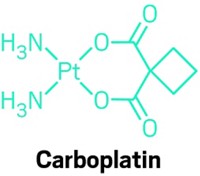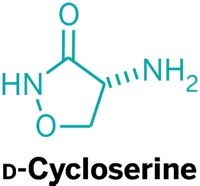Advertisement
Grab your lab coat. Let's get started
Welcome!
Welcome!
Create an account below to get 6 C&EN articles per month, receive newsletters and more - all free.
It seems this is your first time logging in online. Please enter the following information to continue.
As an ACS member you automatically get access to this site. All we need is few more details to create your reading experience.
Not you? Sign in with a different account.
Not you? Sign in with a different account.
ERROR 1
ERROR 1
ERROR 2
ERROR 2
ERROR 2
ERROR 2
ERROR 2
Password and Confirm password must match.
If you have an ACS member number, please enter it here so we can link this account to your membership. (optional)
ERROR 2
ACS values your privacy. By submitting your information, you are gaining access to C&EN and subscribing to our weekly newsletter. We use the information you provide to make your reading experience better, and we will never sell your data to third party members.
Biochemistry
Ketamine helps neurons regrow lost connections
Researchers glimpse how the antidepressant changes neuron structure and function in “depressed” mice
by Alla Katsnelson, special to C&EN
April 11, 2019
| A version of this story appeared in
Volume 97, Issue 15
Most drugs that treat depression don’t work for about one-third of people who take them. That’s why researchers were excited when they found that the anesthetic ketamine was an effective, fast-acting antidepressant for two-thirds of people in that treatment-resistant population. But even though the US Food and Drug Administration approved a version of the drug for treating depression last month, researchers still know little about how it confers its beneficial effects.
In a new study, researchers took a close-up gander at neurons in live mice under chronic stress, a condition that models depression in rodents. They found that a dose of ketamine helped first restore electrical activity and then rebuild physical connections between neurons that were lost during stress (Science 2019, DOI: 10.1126/science.aat8078). The observations suggest ketamine has both immediate and more sustained effects on how neurons function in the brain.
Neuroscientist Conor Liston at Weill Cornell Medicine and his colleagues implanted a prism into the frontal region of the rodents’ brains that, combined with a specialized microscope that captures images at extremely high resolution, allowed them to observe branches of nerve cells called dendrites in great detail over several weeks. They could even see tiny nubbins on the dendrites called spines, which form the synapses connecting nerve cells.
The scientists gave the mice daily shots of corticosterone, the main mouse stress hormone, for three weeks. By the end of that time, the number of spines on the animals’ dendrites decreased significantly. The animals also drank less sugar water and were less keen to explore their cages than before the shots, both signs of depression in mice.
Then, Liston’s team administered a shot of ketamine. Behavioral tests showed that the mice got their pep back within three hours. After 24 hours, spines began reappearing on the dendrites—often in the same locations where they had been before.
Unlike most available antidepressants, ketamine relieves symptoms fast—often within three hours. The fact that the spines didn’t regrow for a full day suggested that their reappearance wasn’t responsible for the short-term behavioral effects, Liston says. Through follow-up experiments, the team determined that the short-term effects resulted from ketamine restoring electrical activity within groups of neurons that had become less active with corticosterone treatment.
To understand the drug’s more sustained effects, the researchers used a light-based technique to delete the newly regrown spines, and found that without them, the mice returned to their “depressed” behavior state. The researchers concluded that synapse formation was required not for inducing, but for maintaining ketamine’s effects, Liston explains. His team next plans to look for ways to enhance those synapses’ survival. In humans, such survival-enhancing methods could involve additional drugs, brain stimulation therapies, talk therapy, or even exercise.
Technologically, the study “was a tour de force,” says Mark Rasenick, a neuroscientist at the University of Illinois at Chicago. “Because they were able to [see spine formation] in real time, they were able to dissociate the rapid and the slower effects of ketamine.”





Join the conversation
Contact the reporter
Submit a Letter to the Editor for publication
Engage with us on Twitter